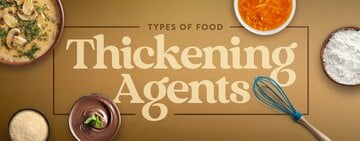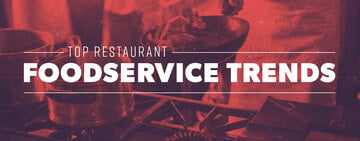What is Molecular Gastronomy?

Molecular gastronomy is a branch of food science that focuses on the physical and chemical processes that arise when cooking. These processes and interactions are explored and manipulated to yield flavorful, functional, and artistic results. Molecular gastronomy techniques are usually applied by restaurants or experimented with at home.
Shop All Molecular Gastronomy SuppliesMolecular Gastronomy vs Food Science
Food science is the larger discipline that encompasses molecular gastronomy. Like molecular gastronomy, food science also concerns the physical, biological, and chemical composition of ingredients. However, it deals with how the composition pertains to production, nutrition, deterioration, and food safety on the industrial and mass food production level. On the other hand, the intent of molecular gastronomy is for culinary understanding and experimentation of dishes in restaurants and homes.
How Does Molecular Gastronomy Work?
Molecular gastronomy works because of the interactions of different ingredients that cause various effects. Every recipe has underlying physical, biological, and chemical mechanisms that make the dish turn out as intended.
Example of Molecular Gastronomy: A souffle "inflates" instead of becoming like a pancake as a result of the proteins that make up egg whites. When the egg whites are whipped, tiny air bubbles are created, which expand when heated. The combination of the heating and setting of the egg proteins and air bubbles causes an inflation.
Souffle is a common recipe, but molecular gastronomy also seeks to identify new and innovative mechanisms and outcomes.
Molecular Gastronomy Recipes
Below we go through 5 dynamic molecular gastronomy dishes:

- Foam curry - With agar agar, you can create a foam curry to put into a siphon, which can be dispensed onto any dish, like chicken or vegetables.
- Smoked beer and cocktails- Fill a smoking gun with flavored wood chips or herbs to serve a smoking drink and to create an aromatic experience
- Arugula spaghetti - Make long strands of arugula with the help of agar agar, and serve hot or cold.
- Disappearing transparent ravioli - Use round, thin edible film discs consisting of potato starch and soy lecithin to create transparent "ravioli." Fill with any ingredient that has a low water content, like fried fish and meat or sweet fillings like dried fruits and honey.
- Powdered Nutella - Prepare a hazelnut powder with maltodextrin that melts on the tongue. Top desserts, ice cream, or fruit.
Molecular Gastronomy Techniques
Below we detail 10 molecular gastronomy techniques.
1. Emulsification
To create foams or "airs" that dissolve in the mouth, you can use a hand blender to mix soy lecithin with your chosen ingredient. Create balsamic foam to pair with mozzarella and tomatoes, or top a cocktail with citrus "air."

2. Spherification
Spherification is the process of creating soft, squishy spheres that resemble pearls or caviar eggs. This technique uses calcium chloride and alginate, which gel when combined. One common use of spherification is to make popping boba for bubble tea.
3. Meat Gluing with Transglutaminase
Transglutaminase, or meat glue, is an enzyme that is frequently used to bind together pieces of meat, chicken, or fish fillet. You can also use it to make a smooth combination of different types of meats. Create slices of bacon spirals, or combine several types of fish in a striped, checkered, or other patterned arrangement.
4. Gelification
Using agents such as agar agar or carrageenan, you can transform liquids and liquified foods into gels. Use it to create noodles for an entree or other unique shapes to include in a specialty dessert or appetizer.
5. Sous Vide
Sous vide is a technique in which vacuum-sealed food is slow-cooked in a water bath that is set to a certain temperature. Prepare many different types of foods, from steak to fruit.
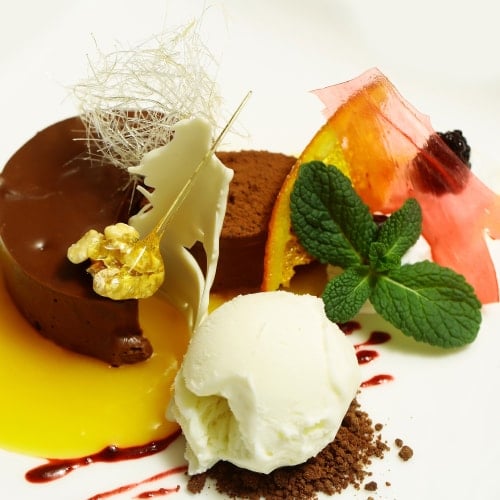
6. Deconstruction
This technique involves breaking down the elements of a dish and rebuilding the presentation. Usually, a deconstructed dish consists of multiple components of a dish that are presented together. For example, you can serve a small cake next to the frosting or topping with bits of dehydrated marshmallow on the side. This technique provides a basis for developing a unique presentation and plating method for your molecular gastronomy creation.
7. Converting Liquids into Powder
Turn high-fat liquids into powder with maltodextrin, a starch-like substance. Convert caramel, coconut oil, Nutella, peanut butter, bacon, and more into powder to add a savory or sweet touch to any dish.
8. Incorporating Edible Paper
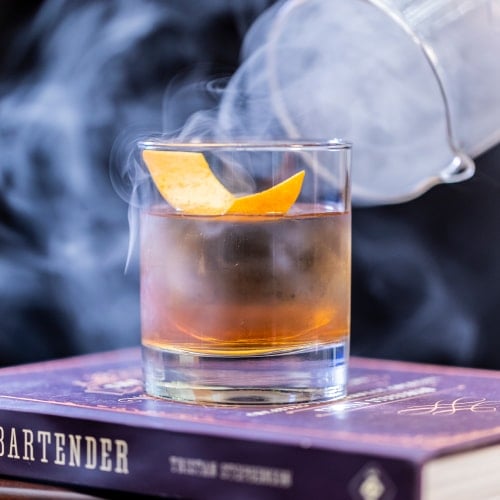
You can add an interesting dimension to dishes with edible paper, which can be made with potato starch and soybeans. Infuse different ingredients in your edible paper recipe to add color or flavor, such as vanilla, cinnamon, fruit juice, or cinnamon.
9. Smoking
Smoke cocktails, beer, sauces, dressings, meat, and more with a smoking gun. This method creates a brief attractive presentation of smoke upon serving and leaves an aromatic flavor.
10. Flash Freezing
Using liquid nitrogen, you can immediately freeze food. This instant process preserves the texture of food and does not create large ice crystals. By flash freezing certain elements of your dish, you can create intricate decorations or garnishes.
Molecular Gastronomy FAQs
Below we answer 4 commonly asked questions about molecular gastronomy's origins, importance, and safety information.
Who is the Father of Molecular Gastronomy?
Hungarian physicist, Nicholas Kurti, and French chemist, Herve This, coined the term "molecular gastronomy." While acknowledging that the natural study of cooking is a time-old practice, they urged for an organized and separate discipline to study cooking within the larger discipline of food science, which mainly dealt with large-scale food processing.
Why is Molecular Gastronomy Important?
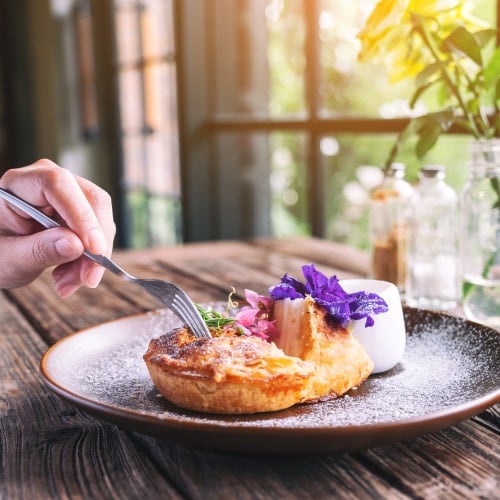
Molecular gastronomy is important because it bridges the social, artistic, and technical ramifications of food and food preparation. By studying the science behind different culinary processes or commonly used methods, chefs and scientists can understand why certain outcomes occur. In this way, they are better able to reproduce favored effects. Molecular gastronomy can also confirm or refute consequential traditional culinary theories. For example, it was previously thought that strawberries would lose their flavor if washed.
Molecular gastronomy enables chefs, scientists, and others to experiment with food techniques and, in many cases, to create a shared social experience of culinary innovation and delight.
Is Molecular Gastronomy Safe?
Yes, molecular gastronomy is generally considered safe, especially when experimental food creations are consumed in moderation. It further depends on the ingredients used. For example, naturally occurring emulsifiers and hydrocolloids (thickeners), like gelatin or agar agar, are safe to consume. On the other hand, cheaper emulsifiers, like soy lecithin, have potential side effects like bloating and nausea. Additional concerns involve the use of certain additives and other ingredients, like liquid nitrogen fumes, xanthan gums, and calcium salts.
However, each dish only uses a small amount of chemicals, and individuals only consume these dishes once in a while. Therefore, there is a limited exposure to potentially unsafe ingredients and an unlikelihood that long-term side effects will occur.
What is a Molecular Gastronomy Kit?
A molecular gastronomy kit includes different tools, ingredients, and sometimes a recipe booklet, so you can experiment with molecular gastronomy methods. Many kits include molds, spoons, syringes, pipettes, and sachets of agar agar, calcium lactate, sodium alginate, and soy lecithin.
Molecular gastronomy provides a platform for chefs and home bakers alike to experiment and share unique dishes around the table. Consider incorporating molecular gastronomy dishes into your next restaurant menu, or add a technique to an appetizer at your next dinner party.

